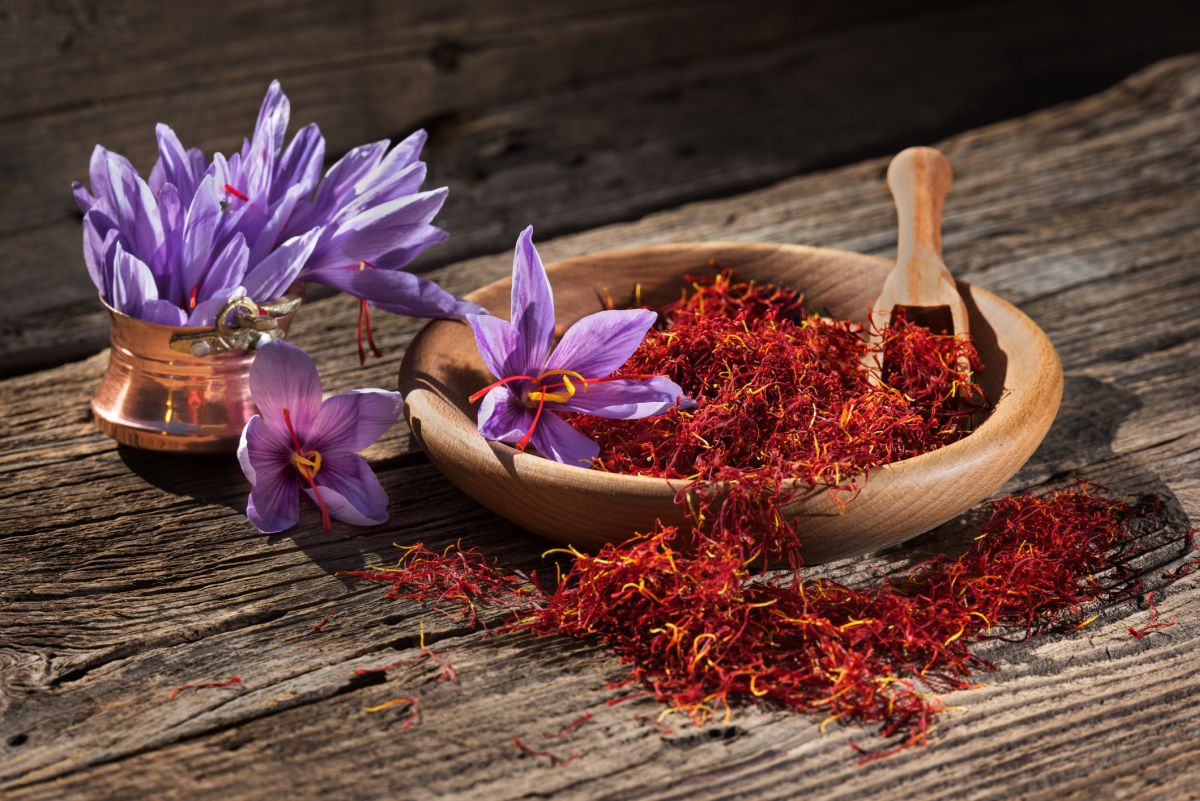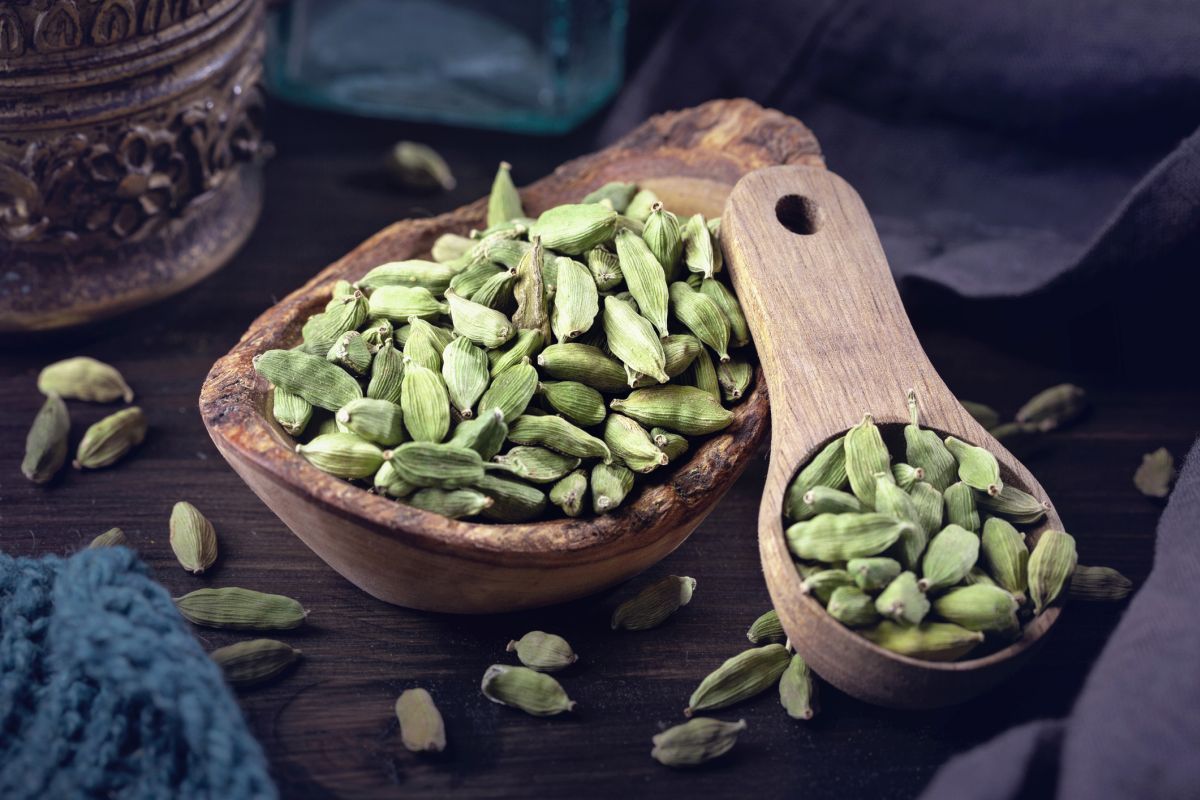A saffron substitute is needed from time to time when you haven’t had a chance to pick some up from the store. Saffron is a rare spice and the world’s most expensive spice at that. Luckily, there are some great swap-outs that are likely in your pantry already.

What is Saffron
Saffron is a spice that is derived from the Crocus sativus flower. The styles and stigma, also known as threads, are what is used to flavor dishes. Each flower only produces 3 red threads, hence the expensive price tag on the spice.
Common Uses for Saffron
- Seasoning – saffron is used in savory dishes to add a complex and delicate flavor profile to a wide variety of dishes.
- Dye – saffron is used as a traditional dye, but despite the thread being red, it dyes fabrics a bright yellow color.
- Medicine – saffron has been used in traditional medicine for centuries, and the benefits & uses range from a sedative to a stimulant.
Why Is It Hard to Find a Substitute for Saffron?
Saffron substitutes are hard to find due to the very complex and unique taste that saffron adds to a dish. It adds a significantly distinctive gold-yellow hue to food, which is difficult to mimic.
How to Choose a Substitute for Saffron
- Color – if you need to use saffron for its vibrant color, use a substitute that will also color your dish in a similar way.
- Taste – a few alternatives for saffron provide a similar taste profile as saffron, just ensure you know what notes to look for in your substitution.
10 Best Ingredients for a Saffron Substitute
1. Turmeric
Turmeric powder is made from ground turmeric roots. The seasoning adds a slightly earthy flavor to your dishes. Turmeric is the best substitute for saffron if you need the bright yellow color added to your dish – just beware, it does stain.
Lively Table mentions turmeric as an alternative to saffron in their recipe for jeweled rice.
2. Safflower
Safflower sounds similar to saffron and is also known as poor man’s saffron. Although the plants are distinctly different, safflower can make for a good substitution, but where saffron adds sweet notes, safflower will add some nutty aromas to your dish.
Foodstuct compares the finer details of the two ingredients.
3. Annatto
Annatto is another alternative to saffron that bears the ‘poor man’s saffron’ title. It comes from the seeds of the achiote tree and also adds a slightly sweet taste, similar to saffron, to your dishes. Stabroek News delves deeper into the profile and qualities of Annatto.
4. Cumin
Cumin is far easier to find than some of the other alternatives to saffron, but it has a more bitter and earthy taste than saffron, so you might want to add a bit of sugar or honey to balance the bitterness. Versus compares the nutritional value of both spices.
5. Sweet Paprika
Sweet paprika makes for a great and cheap saffron substitute. Although, instead of coloring your dish yellow, it will likely color it reddish. The seasoning is preferred over smoked paprika since it mimics the sweetness of saffron.
Fine Dining Lovers explains the difference between the different options of paprika.
6. Curry Powder
Curry powder has a distinctive taste. So when using it as an alternative to saffron, you have to be careful not to add too much of it, or else you will make a curry instead.
But when added in smaller ratios, it adds a bit of complexity that your dish would otherwise be lacking if you don’t have saffron. You can find some curry blends with saffron in it, which might solve your problem. Try making Curious Spoon’s Kashmiri Saffron Curry.
7. Cardamom
Cardamom isn’t always readily available in stores, but it makes for a great saffron substitute. It adds a warm and earthy flavor to your dishes, but the coarser the powder is, the stronger the flavor will be, so use caution. Versus compares the nutritional values of both spices.
8. Marigolds
Marigold petals are dried and used in dishes to color the dishes in a similar way that saffron would. They also add a similar floral taste to your dish, as saffron would.
They do have a bitter taste, so ensure you balance the bitterness with sweeter ingredients or use it sparingly. Gardener’s Path describes their flavor profile and varieties in depth.
9. Sumac
Sumac is a savory and sweet spice that not many people are familiar with. It is also slightly tangy and has citrus notes, which makes it a complex but good spice to use in savory and some sweeter dishes. Borough Market describes both spice’s flavor profiles for a comprehensive overview.
10. Food Coloring
If you’re really out of any other options, using good old-fashioned food coloring to color your dish is a good option to have, and it’s almost always in stock at most stores.
Although some people are against synthetic food coloring, Healthline assures you there is no conclusive evidence to back up any health issues claims.
Tips for Saffron Substitution
- Budget – saffron is the most expensive spice in the world, and understandably most people look for a cheaper alternative. Try using a high-quality alternative that is still affordable for the best results.
- Flavor – saffron is complex in flavor, and some dishes rely on certain notes in the spice’s aroma. Find an alternative with the closest aroma to what you’re trying to get from saffron.
Cheapest Substitute for Saffron
The cheapest saffron substitute for color will be food coloring or turmeric. The most affordable alternative with regard to flavor will be cumin and sweet paprika.


Bettie Hall says
Cardamom is sold in pods. Does anything have to be done to it before it goes into a recipe? Ground or crushed ?
Thanks